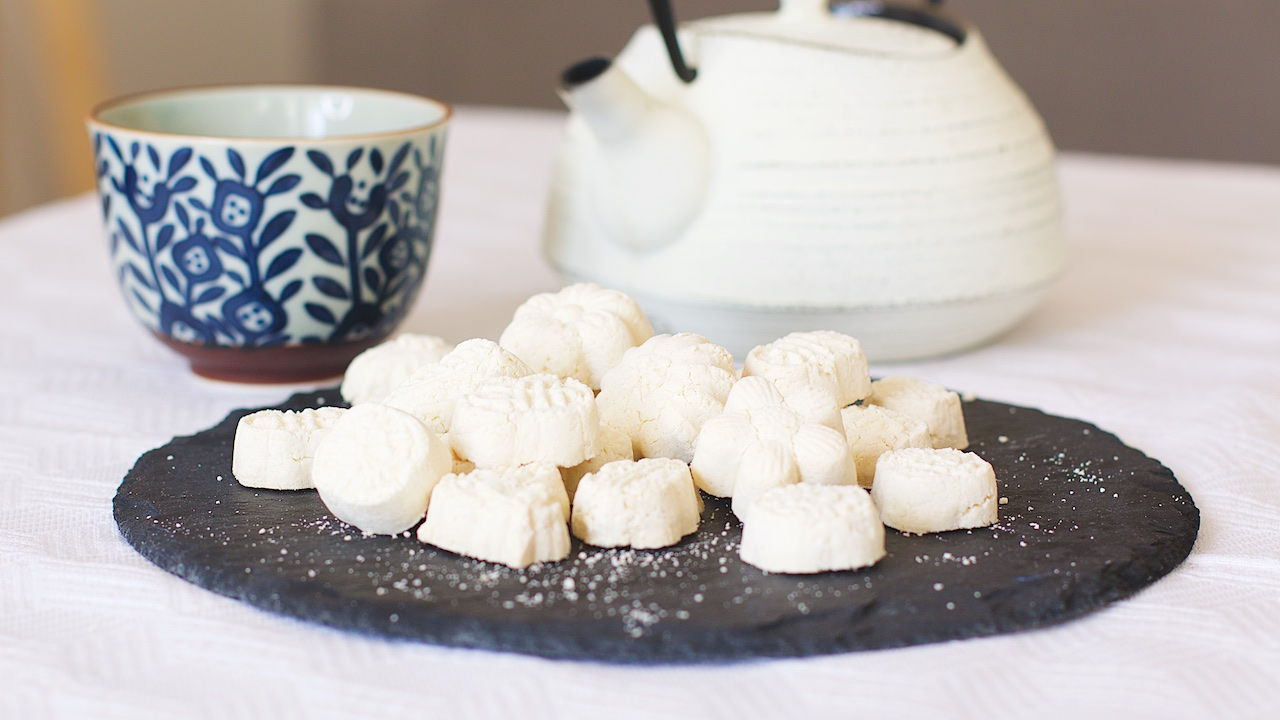'Kuih bangkit' (tapioca cookies) is often enjoyed during festive seasons like Chinese New Year and Hari Raya in Singapore and Malaysia. These little coconut cookies are made with tapioca flour that results in them being light, airy and delicate. In the Malay language, the term 'kuih' refers to bite-sized snacks or sweet/savoury desserts. ‘Bangkit’ on the other hand means ‘to rise’. I assumed that the name derives from the cookies rising during the baking process.
Dry-fry the flour
The perfect kuih bangkit crumbles and melts in the mouth the moment it is eaten. It is light, airy and delicate in texture. Getting the melting effect is no small feat. To make it successfully, the moisture from the flour needs to be removed in order to create the light and fluffy texture. Therefore, the flour needs to be baked or cooked in a dry pan beforehand.
Cream coconut
Pure cream coconut is recommended as it is thick in consistency and lacks in moisture. This is perfect when making kuih bangkit to get its crumbly texture. Ensure to choose good quality cream coconut to achieve the optimum flavour. It is advisable to sift the cream coconut for a smoother texture.
Coconut cream which is a thicker version of coconut milk can also be used. However, in comparison, coconut cream has a higher liquid content and more fluid.
How is the texture of the perfect dough?
The dough to be shaped for baking should be crumbly yet being able to hold its shape. After mixing all the ingredients, use your palm to grasp the dough. If the dough crumbles, add 1-2 teaspoons of water to help it hold its shape. When the dough comes together and doesn't fall apart, then you can move on to the next step.
The other test is to try to break the dough into two as shown in the photo below:
The dough should be able to break into two with ease. Otherwise, sprinkle some tapioca flour onto the dough and knead before testing again.
How do I know when it is ready?
During baking, ensure that the heat does not brown the cookies because they are meant to be white (or off-white). It is also fine if they were to crack a little during the baking process.
Why is the dough still soft?
It could be one of these 2 reasons - the thickness of the coconut cream or the heat of the oven. In this recipe, coconut cream is obtained by chilling coconut milk to separate it from its water.
After the water is removed, what remains is known as coconut cream which is thick in consistency and plays an important role in making kuih bangkit. Coconut milk contributes too much moisture to the dough.
Additionally, ovens differ due to their types and sizes. Therefore, despite baking at the suggested temperature and time, the kuih bangkit might require a slightly longer baking time. If it is your first try, I would suggest to bake them until they are very lightly browned on the surface.
Storing kuih bangkit
Store the cookies in air-tight containers. They can be kept for up to 1.5 months.

